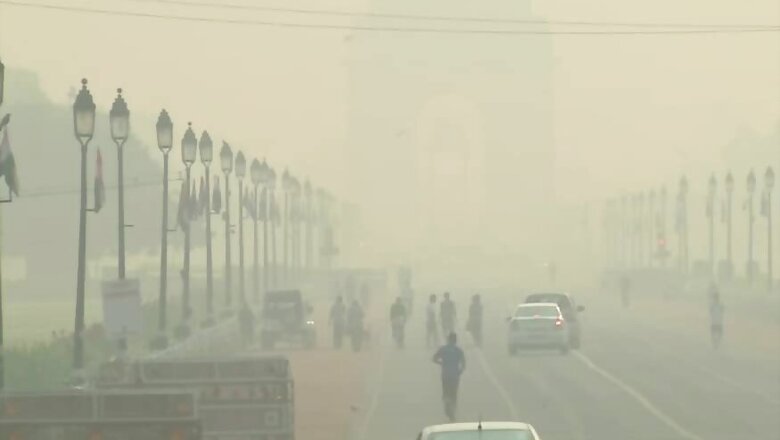
views
Amid pollution turning into a serious national issue and the National Clean Air Programme (NCAP) largely staying limited to Delhi, experts here on Monday advocated airshed management to tackle pollution.
These experts and pollution control boards officials were participating in a panel discussion, organised by Climate Trends, a Delhi-based climate communications initiative, to map the pathway for regional cooperation and coordination to tackle the crisis.
Sagnik Dey, Associate Professor at IIT-Delhi and Coordinator for the Centre for Excellence for Research for Clean Air (CERCA), said, "We live in the age of data, yet there is no air pollution data for the entire rural India."
To address the problem of air pollution comprehensively, Dey said, "We need to delineate airsheds based on wind flows and their pollutant reach. The city action plans should be integrated with the larger airshed management strategy to to deal with the problem."
Haryana, despite not being included in the NCAP, is the only state that has made an action plan for Gurugram that will include 300 km of the surrounding area as shared airshed where pollution transfer happens.
The entire NCAP rested on the Central Pollution Control Board and the state pollution control boards but their resource and capacity must be evaluated and enhanced, Dey said. "Monitoring and compliance are key to success. Unless the central, state and municipal bodies work in tandem, we will return to these pollution spikes each year," Dey said.
Analysis of November 1-15 data from urban sciences across 26 cities in the Indo-Gangetic Plain showed that nine cities were in severe air quality category, including satellite towns like Ghaziabad and Noida, with Delhi ranked fifth behind Ghaziabad, Noida and Greater Noida.
A 2012 study by IIT-Delhi mapped the aerosol transfer across the Indo-Gangetic region, making it the world's most polluted hotspot -- stretching from Punjab, Haryana, Delhi, UP, Bihar and all the way to West Bengal.
Haryana with five of the 10 most polluted cities in this study, has no city listed amongst the 102+20 NCAP cities.
The analysis further highlighted how Gurugram, spread across 732 sq km, has two monitoring stations against 35 in Delhi, which has double the area of its neighbour.
Ronak Sutaria, CEO, Urban Sciences, said, "It's going to be a challenge to scale up monitoring to 1,000 monitors in the country as per the NCAP due to cost. But that too is not enough as all studies say 4,000-6,000 monitors are needed for adequate coverage."
The Indo-Gangetic plain has a complex set of topographical and meteorological conditions that produce a land-locked valley effect. These conditions are monitored for forecast, though the lack of adequate set of monitoring devices and suitable presentation for ease of understanding have limited the ability of the responsible agencies to act proactively.



















Comments
0 comment